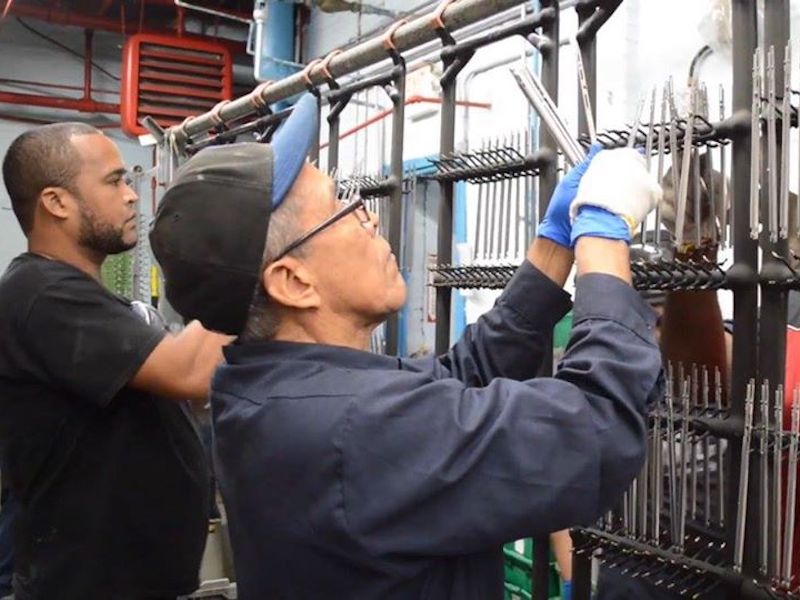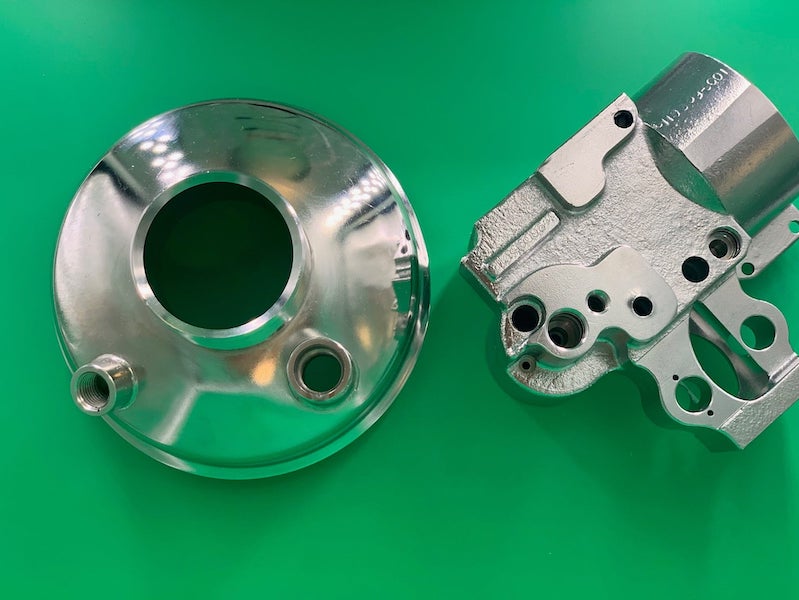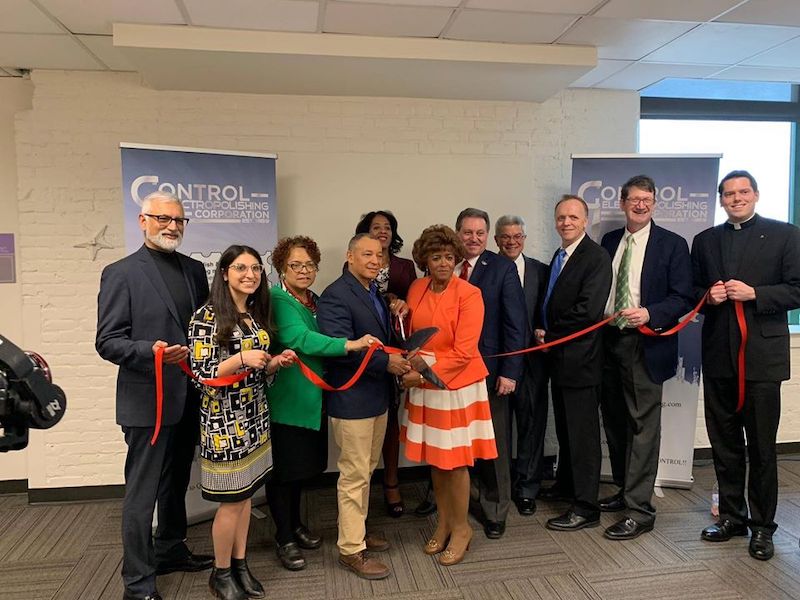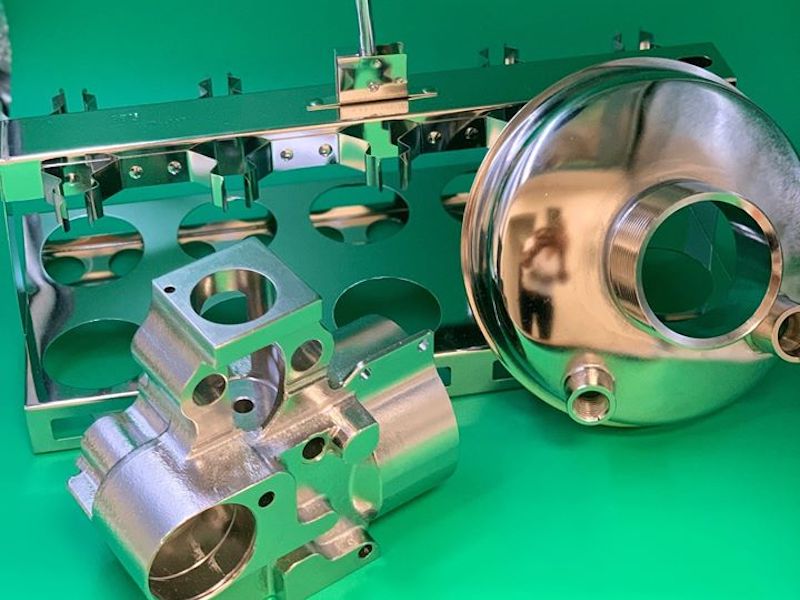Control Electropolishing in Brooklyn, New York, has been in business for over 60 years, and one thing has remained fairly consistent in that time: a commitment to excellence in how they electropolish parts, and the chemical solutions that they use to get there.
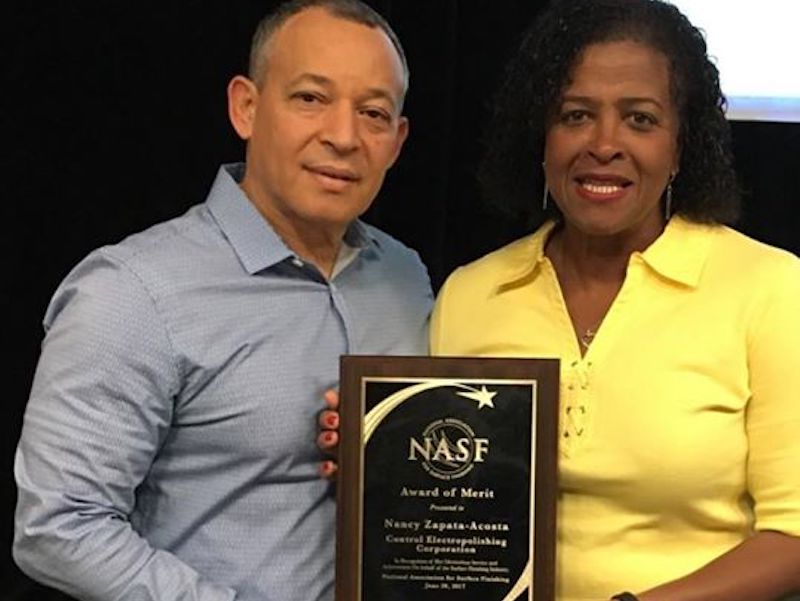 The metal finisher was founded in 1959, but for the last 30-plus years has been run under the watchful eye of Nancy Zapata-Acosta, the company’s current president and CEO, who took over Control Electropolishing in 1991 from founder Charles Morla, Jr. Her husband, Manuel Acosta, is director of operations and her daughter Lina De La Cruz, is the vice president.
The metal finisher was founded in 1959, but for the last 30-plus years has been run under the watchful eye of Nancy Zapata-Acosta, the company’s current president and CEO, who took over Control Electropolishing in 1991 from founder Charles Morla, Jr. Her husband, Manuel Acosta, is director of operations and her daughter Lina De La Cruz, is the vice president.
Some in the manufacturing and finishing industry may not fully understand the purpose of electropolishing, but Control Electropolishing has made itself one of the best operations in North America.
“We are almost the reverse of what people think electroplating and finishing are all about,” Zapata-Acosta says. “We are removing material to a polish finish instead of adding. There are some parts where we are taking off 1/10,000th of an inch of material, and that is extremely precise.”
Control Electropolishing’s large tanks measure 10 feet in length and are four feet deep, allowing them an opportunity to provide services to large parts that need electropolishing, such as frames for pharmaceutical manufactures and vacuum chambers.
EXPERTS IN FINISHING MEDICAL PARTS
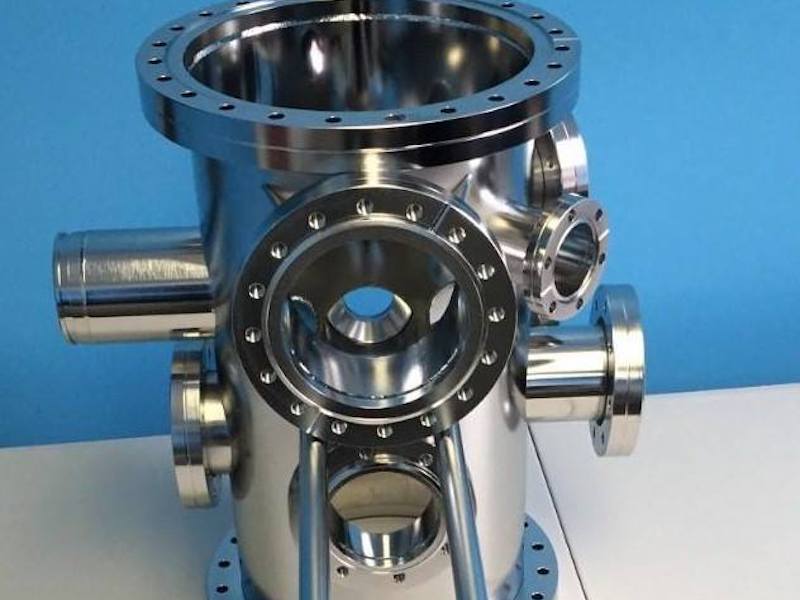 Manuel Acosta says that about 80% of the work they perform at Control Electropolishing is for the medical industry, with the rest spread around pharmaceutical, semiconductors, food service, and other parts needing aesthetic surface treatments.
Manuel Acosta says that about 80% of the work they perform at Control Electropolishing is for the medical industry, with the rest spread around pharmaceutical, semiconductors, food service, and other parts needing aesthetic surface treatments.
“We specialize in the high-precision components,” he says. “Electropolishing is a very delicate process, and not everyone can do it. It takes experience and knowing what you are doing.”
The company is known throughout the U.S. for their expertise and precision work, and one of the consistent parts in their 61-year history has been their relationship with Hubbard-Hall, which supplies the electropolishing and cleaning solutions for the shop’s operations.
Several years ago, Hubbard-Hall acquired the supplier that Control Electropolishing had been using since they started in 1959, but Zapata-Acosta says they have had a great relationship with the Hubbard-Hall technical and sales staff over the years.
“They have been great to work with,” she says. “Anytime we have needed technical help on a project — such as when we get a new stainless alloy to process; their technical people are open to test it for us.— we have had success working with the Hubbard-Hall technical people and our relationship has always been positive.”
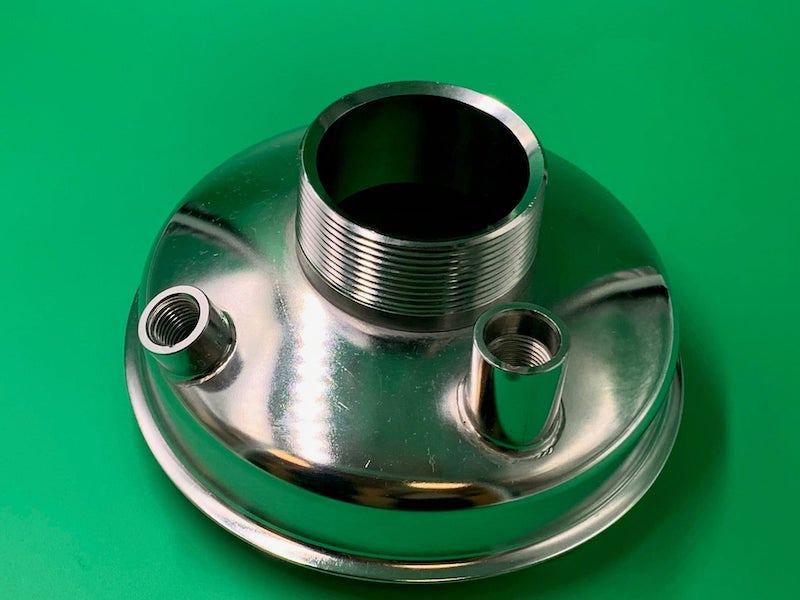 Control Electropolishing uses Hubbard-Hall’s ENE Electropolish #9 electrolyte, a stable and easily controlled economic solution readily adaptable to obtain the many advantages inherent in the electropolishing process. The shop also uses Hubbard-Hall’s Ultrex AS 181 W, a highly-alkaline soak cleaner that is formulated especially for steel and copper to provide excellent removal of oils and grease, preparing the base metal for additional processing in a wide range of finishing cycles.
Control Electropolishing uses Hubbard-Hall’s ENE Electropolish #9 electrolyte, a stable and easily controlled economic solution readily adaptable to obtain the many advantages inherent in the electropolishing process. The shop also uses Hubbard-Hall’s Ultrex AS 181 W, a highly-alkaline soak cleaner that is formulated especially for steel and copper to provide excellent removal of oils and grease, preparing the base metal for additional processing in a wide range of finishing cycles.
For wastewater treatment, Control Electropolishing utilizes Hubbard-Hall’s Aquapure AN Clear, a liquid anionic flocculent for wastewater treatment that is designed for use in settling suspended precipitates. Aquapure AN Clear will cluster the precipitate into a manageable mass and works best as a post-treatment for dosing with one of Hubbard-Hall’s coagulants.
ESSENTIAL CLEANING FOR ELECTROPOLISHING
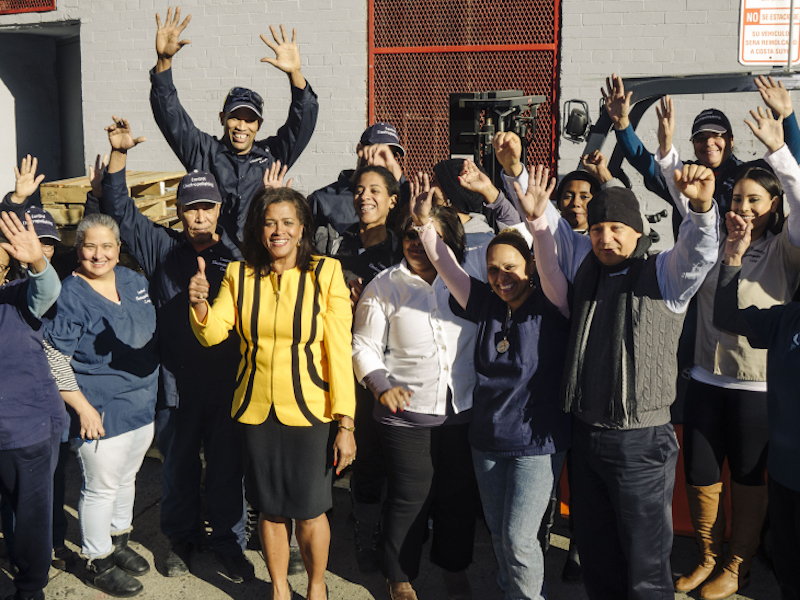 Mike Valenti, Hubbard-Hall’s product manager for cleaners and non-ferrous surface preparation, says a typical cycle for electropolishing is degrease, descale if necessary, electropolish, two water rinses, neutralize if necessary, another water rinse, and then dry.
Mike Valenti, Hubbard-Hall’s product manager for cleaners and non-ferrous surface preparation, says a typical cycle for electropolishing is degrease, descale if necessary, electropolish, two water rinses, neutralize if necessary, another water rinse, and then dry.
“Cleaning is necessary to remove surface soils such as grease, oil, fingerprints, and drawing compounds,” Valenti says. “Otherwise, they will interfere with the subsequent electropolishing and may cause an etched, pitted, or non-uniform surface finish.”
For Zapata-Acosta, consistency has been the hallmark for how she has run Control Electropolishing since starting in 1981 as the company secretary. She quickly grew in her responsibilities with the finisher and took on more activities on the shop floor. When Morla retired in 1991, she and a partner bought the business, but she has been the sole owner since 1995, making it one of the premier electropolishers in the industry.
Control Electropolishing recently moved its corporate officers from the plant to give operations more space for its growing electropolishing business; the shop has seen its sales grow 10-fold since 2010, although they still have room to add customers and increase production.
“We are about at 60% capacity now, so we are always looking to work with the right customer,” says Acosta, the director of operations. “We are running just one shift, so that can be increased, too, if need be.”
FUTURE LEADERSHIP
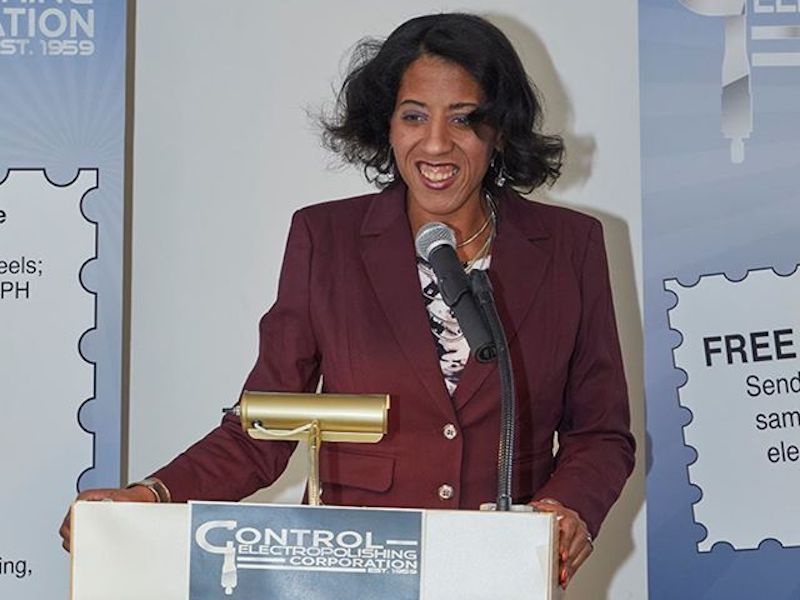 Zapata-Acosta’s daughter, Lina De La Cruz, has been working under her mother’s wing for several years, and as vice president, she eyes expansion of the company with the steady pace exhibited by Zapata-Acosta.
Zapata-Acosta’s daughter, Lina De La Cruz, has been working under her mother’s wing for several years, and as vice president, she eyes expansion of the company with the steady pace exhibited by Zapata-Acosta.
The recent coronavirus pandemic has started talks of more medical and surgical equipment being reshored back to the U.S., which might increase the workload for shops who perform electropolishing here.
“We always look carefully at how we grow the business, because we always want to make sure we are taking care of our existing customers who have been with us a long time,” De La Cruz says. “A lot of things need to be considered before expanding or ramping up, and we are always aware of what got us here and how we stay on course.”
For additional information, please visit controlelectropolishing.com or call 1-718-858-6634





